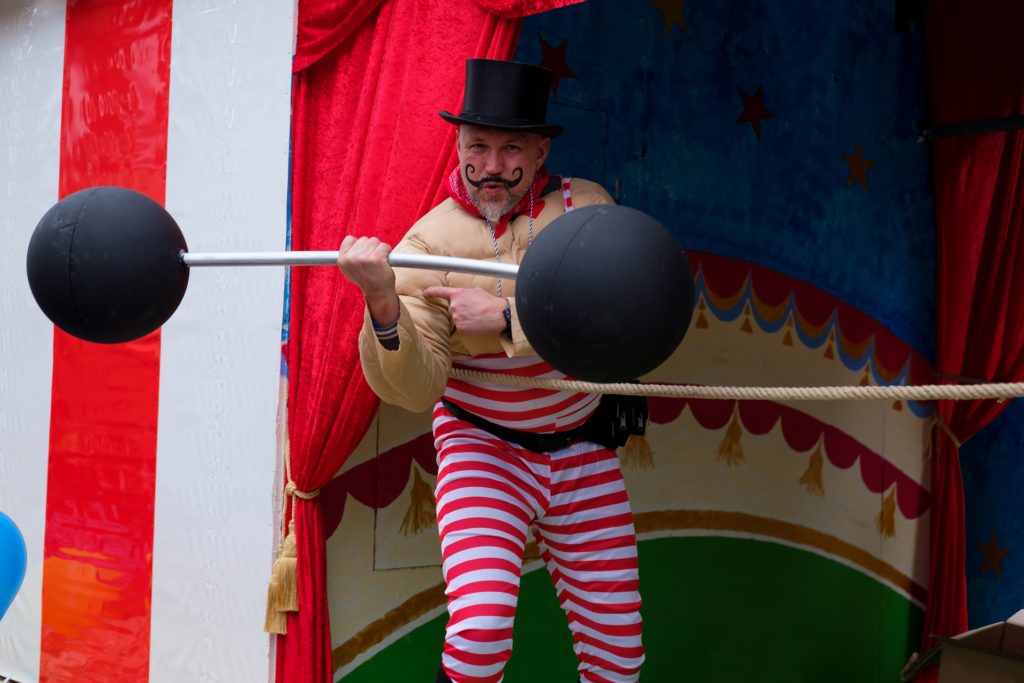Earlier, I wrote about the nature and necessity of self-esteem. Now I’d like to turn to the topic of building self-esteem. After all, if self-esteem is such an essential ingredient of a contented bachelor life, we’d better know something about how to get it.

I couldn’t cram everything into a single article, so instead this will be a series (Solo Self-Esteem) of short, digestible pieces.
By the way, I’m not pulling this information out of my butt. I’m basing it on decades of reading, personal work, and professional experience. I don’t claim to have all the answers, but I do know more than most people about this subject.
We begin at the beginning, with personal identity. We begin there because many people get the cart before the horse — they try to build self-esteem before they have built a self. That doesn’t work. It’s like trying to build a house before laying the foundation. First the self, then self-esteem.
As a man flying solo, don’t underestimate the challenge of building a strong, clear sense of personal identity. It will be harder for you than for other, more traditionally minded men. They have easily accessible hooks to hang their identity hats on, but you do not. They have pre-fabricated templates to plug into — coupledom, marriage, family, children, and all the work done to support that — but you do not.
Bachelors have chosen a different route, and so they have to find their identity elsewhere. They have to find it themselves, without much help, and sometimes facing opposition. It can be a challenge.
First the Self, then Self-Esteem
You may be thinking, “Doesn’t everyone have a self?” No — not if by “self” we mean a clear, well-developed sense of personal identity, grounded in reality.
Many people do not have that. Instead, they end up with an underdeveloped self or a false self. To flesh that out, I’ll say a bit about each.
We all begin life fused to the social matrix around us – parents, family, peers, and culture. The process of development, at least in Western cultures, involves pulling out of that social matrix and differentiating — becoming unique, separate individuals. This can be a challenge, and some people do not get far with it. They remain undifferentiated, still largely fused to the social matrix. They tend to be conformist, emotionally reactive, and outer-directed. These are people with underdeveloped or immature selves.
Then we have the pretender selves, the false selves. The “self” isn’t just a single, unitary entity, after all; it comes in all sorts of shapes and sizes. One important distinction is between the real self and the false self.
The real self is what you actually feel, think, and want. You could also call it the innate self, private self, or true self. By contrast, the false self is a mask that hides, denies, or distorts the real self.

Shaped by social experience, the false self is designed to ward off dangers from inside (e.g., unacceptable thoughts or feelings) and out (e.g., risk of conflict or rejection). The false self also grabs social goodies (e.g., approval). You could also call it the public self, social self, or persona.
The false self takes many different forms, but here are two that I’ve found helpful to identify:
- The codependent self, based on external sources (e.g., what others think), typically characterized by “niceness,” control, and caretaking.
- The idealized self, based on what you wish to be, what you imagine yourself to be, or what you “should” be — rather than who you really are.
Everyone has some false self floating around, or a least fragments of it. It’s a matter of degree and self-awareness.
Bottom line, if you don’t have a clear sense of self, based in reality, you cannot develop authentic self-esteem. If you don’t have a self, what is there to esteem? And if your self isn’t the real one, what are you esteeming, exactly?
Suggestions for a Clear Self

1. Spend time with yourself
If you wanted to get to know someone better, you’d spend time with them, right? Same thing here. The goal isn’t just to kill time; it’s to connect with who you are. To do that, get beneath the mental chatter on the surface. Get down to what you really feel, think, or want.
There’s nothing esoteric about this. You don’t have to burn incense and chant. You just have to settle down enough to get connected up inside. Most people don’t bother to do this. They spend all their mental energy whirring about external events, relationships, duties, entertainment, and distractions. As a result, their identity remains stifled. Don’t let that happen. Look within, and do it regularly.
*
2. Ask thyself some questions
“Identity” isn’t a big, amorphous lump. It has specific component parts. To help you clarify your identity, ask questions designed to tease these out:
- Who am I?
- What are my main values? What is truly important to me?
- What is my personality like? How would I describe my personality?
- What are my strengths and weaknesses?
- What am I good at? What are my skills?
- What do I like?
- What do I want?
It helps to write out your answers, rather than try to think it through in your head. I’ll say more about that below.
*
3. Think negatively
Identity has a negative aspect. Identity is not just about who you are; it’s also about who you are not. So as you answer the questions above, think about their negative, reverse versions, too. For example:
- What do you not value?
- What personality traits do you not have?
- What do you not like?
- What do you not want?
That can help clarify identity, too.
*
4. Know your phony self

Everyone has a false self or two. No shame. It’s worse to kid yourself that they don’t exist. Just learn the difference. Be able to spot your fake self in motion. Three reasons for that:
- What you are not aware of can control you. Awareness gives you some measure of control.
- Without awareness, you will invest your limited resources (time, energy, attention, and money) into the false self, rather than the real one. That is like investing all your money in junk bonds, rather than in solid, reliable stocks. You’ll be flushing your resources down a hole.
- When you know your false self, you’ll be better at spotting it in others.
You can try to identify your false self on your own, via introspection. Ask yourself how you kid yourself and defend yourself internally. Ask yourself how you present a false self to others. That can take you part of the way there.
It’s tough to do well on your own, though. Part of that is because of our tendency toward self-deception; the other part is what I mention next, the lack of a conceptual vocabulary. I think it can help a lot to read some good books or articles on the topic. I’ve suggested some below.
*
5. Expand your conceptual vocabulary
We understand things with words and concepts. If you’re trying to understand yourself, a conceptual framework (a vocabulary) helps a lot. Without that, you’re going to be trying to figure out everything by yourself from scratch.
So how do you get this conceptual framework? Well, the usual way is to read books and articles by people who have thought long and hard about the topic. I’ve listed a few suggestions below, which might stimulate your thinking. But there is a ton of material out there, so just follow your own interests and curiosity, and see where it leads. Granted, some of the material out there is half-baked, and you have to take it with a grain of salt. But there is a lot of good stuff, too, which can shine a light in corners you hadn’t thought to look, and it can give you concepts to use to better understand yourself.

*
Write it out
Writing something out (rather than just thinking about it) can be helpful, for a number of reasons:
- It clarifies your thinking.
- It allows you to hold a lot of information at once, rather than relying on limited working memory.
- It gives you a document that you can review, which helps you internalize that information.
- You can revise the document over time, making it more complete and accurate, which further clarifies identity.
I keep several documents like this. For instance, I’ve kept a list called Main Values for 20 years. I consult it regularly. It helps me stay on course. It reminds me of what is important. I revise it regularly, which helps my values come into clearer focus. Journaling can help, too. I’d suggest you experiment with writing things out. In my experience, it’s a helpful aid.
I wish you the best in finding your real identity, somewhere between Clark Kent and Superman, and in strengthening your sense of self.
I welcome any comments or questions.
Suggested reading
Renee Baron & Elizabeth Wagele, The Enneagram Made Easy
Roberta Gilbert, The Eight Concepts of Bowen Theory
Karen Horney, Neurosis and Human Growth
Karen Horney, The Neurotic Personality of Our Time
Theodore Millon & George Everly, Personality and its Disorders
Charles Whitfield, Codependence

I really like this third essay in the series. Concise steps, highly actionable.
I like to think of three selves:
1) Persona (the so-called “phony self” in your essay): The outward facade that we show the world; the “armor” we wear in order to fend off criticisms and win plaudits. The suit we wear to work, the smile we wear for clients and customers. Often defensive in nature and kind of rigid.
2) Ego (the “false self” in your essay): The inward picture that we have of ourselves, but skewed by codependent impulses (extraverts) or false ideals (introverts), as you described in your essay. The Ego needs refinement and self-analysis if we are to reach the third step.
3) Authentic Self (the “real self” or “clear self” in your essay): The inward picture we have of ourselves after self-analysis. We get rid of the sentimental or cynical narratives implanted in us by the world and think in terms of what values are really important to us and then attempt to live by those values and see if they improve our lives. So it’s a “self” that’s more in line with our true nature, our values, our true likes and dislikes.
We can’t do much about our Persona, because we always have to put on the suit and tie (our outward armor) and put in the 9-to-5 doing someone else’s bidding. But we can examine our Ego in order to bring our lives more into alignment with our Authentic Self.
Anyway, that’s just a couple thoughts based on your essay. I’m basically just regurgitating what you said in the first half of the essay. But then you go on to provide some great advice for moving from the Ego to the Authentic Self.
Looking forward to see where you take this in future essays.
Yeah, I see those categories, too:
1. false public self (persona)
2. false private self (ego)
3. real private self (real self, authentic self)
Hopefully 3 is reflected in more or less authentic public self.